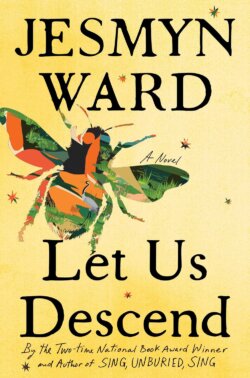A powerful picture book about the transatlantic slave trade, Kwame Alexander and Dare Coulter’s An American Story opens with a question: “How do you tell a story that starts in Africa and ends in horror?” It might seem an impossible topic to teach children, and yet, as the book’s title suggests, it’s an essential part of our national origin story.
Alexander and Coulter approach the subject by interspersing historical information with scenes of a group of students and their teacher discussing these events in a modern-day classroom. For instance, after Alexander offers a list of types of work that enslaved people were forced to do “FOR FREE,” such as “planting corn” and “harvesting coffee,” a student responds, “Why weren’t they paid? That’s not fair.”
Coulter’s artwork, nearly six years in the making, is striking and exceptional. In addition to charcoal sketches (which illustrate the contemporary scenes) and rich, full-color paintings, Coulter created clay sculptures of enslaved people, which he then photographed and incorporated into the book’s illustrations, bringing remarkable dimensionality to the book’s art.
It’s impossible to overstate how impactful Coulter’s illustrations can be. They convey the joy of children playing games around a glowing fire and the peace of lying down to rest among long blades of green grass, but also the terror and sadness of people shackled together in the holds of ships and the suffering of a man with a rope around his neck, “sold like cattle” away from his family.
In fact, the classroom teacher becomes overwhelmed by the lesson. “It’s just too painful,” she tells her students. “I shouldn’t have to read this to you.” Her interjection serves as a helpful pause for readers, allowing them to consider what they’ve read and process their own reactions to it. It also marks the book’s turning point. “Don’t you tell us to always speak the truth,” a student asks, “even when it’s hard?” The text then highlights people who exemplify “speaking up and speaking out” such as Sojourner Truth and Robert Smalls.
An American Story closes with a glorious spread that merges the art styles of past and present, as a clay-sculpture woman places her hand under the chin of a sketched student. In the text, the teacher’s final question (“How do you tell a story this hard to hear, one that hurts and still loves?”) gets its powerful answer: “by holding history in one hand and clenching hope in the other.” Coulter places all of his sketches on yellow backgrounds, and in this pivotal moment, the backdrop takes on a brilliant, radiant glow.
An American Story will not be an easy book to read, and adults should take care when introducing it to very young children. Nonetheless, its pages are filled with needful truths. Alexander’s sensitive, poetic text and Coulter’s majestic art provide a stellar framework for young Americans to learn about their country’s history.




















































